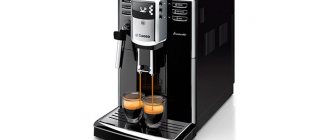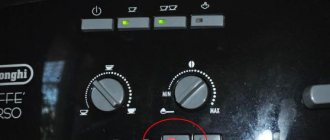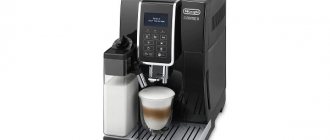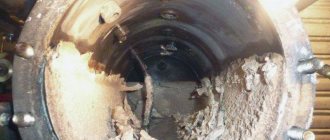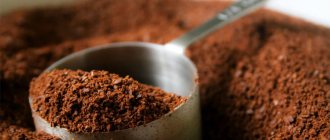Scale is a constant companion of any water heating devices: from electric kettles to washing machines. The thing is that the water is to one degree or another saturated with calcium and magnesium salts, which under the influence of high temperature turn into a barely noticeable sediment. Over time, the tiny particles build up on top of each other, forming hard deposits. Citric acid quickly clears scale, not being inferior in effectiveness to modern store-bought products, and in terms of safety for humans it is noticeably superior to other “chemical” methods.
Scale damage. The harder the water, the faster salt deposits coat the inner walls of containers and heating elements of household appliances. As a result, over time the device begins to perform worse and consumes more electricity. In addition, scale particles that get into food or water can cause damage to health.
If you don’t have citric acid at home, replace the concentrate with a natural analogue. The juice of one lemon is equivalent to 4-5 grams of powder. Citrus is no less effective, and also gives the surface being cleaned a pleasant fresh aroma, but there is one drawback - the consumption is significantly higher.
You can add all finely chopped lemon to the kettle; only purified lemon juice can be added to the washing machine and other household appliances.
Precautions. Do not allow citric acid (concentrated and diluted in water) to come into contact with mucous membranes and skin, as this substance causes burns. Dry crystalline powder may irritate the respiratory tract.
Can it be cleaned?
You can clean the kettle with citric acid. The layer that forms inside is salt deposits. They no longer dissolve in ordinary water. To destroy their hard shell, exposure to more aggressive substances is necessary.
Citric acid is the most accessible, safe and inexpensive remedy that helps to quickly cope with the problem. You can clean the kettle with lemon. It does not harm its walls, does not cause them corrosion or oxidation.
The preservative works exclusively on the surface, dissolving solid deposits. In the future, you can use such a device without danger to your health.
Cleaning the washing machine
Systematic cleaning of the washing machine with citric acid will save you from rapid aging of equipment and rapid breakdown. Hard water, which is used when washing clothes, after some time leaves a large amount of salts that settle on the heating element and other important parts of the mechanism. Multilayer scale begins to wear out the machine and the washing process becomes ineffective.
Cleaning steps
To descale your washing machine with citric acid, take the powder itself and a small piece of dry and clean cloth. The process occurs in stages:
- check the drum for the absence of things in it, since citric acid can discolor the fabric by dissolving the paint;
- a machine with a washing capacity of up to 7-8 kg requires 90-100 g of powder, for smaller equipment (up to 4 kg) 50-60 g is enough;
- It is better to pour the monohydrate into the drum and into the powder tray;
- choose the longest possible mode with all the main processes - soaking, spinning, rinsing at a temperature of no more than 60°C;
- at the end of the washing process, check the condition of the drum cuff, where dirt and sediment may be found in the flap, which is wiped with a clean cloth;
- You should then clean the drain filter from any remaining large pieces of scale and dry the powder container.
It is permissible to clean the washing machine with citric acid up to 3 times a year with high water hardness. Softer water does not have such a devastating effect on the machine, so cleaning the washing machine with citric acid in this case is allowed about 2 times a year. The preventive measure is carried out after every 30th wash.
Advantages and Disadvantages of Acid Cleaning
To clean your washing machine with citric acid, buy this common and inexpensive product in any store. Its availability for every budget is a big plus. The beneficial components of the monohydrate act quickly and effectively, which is why it is chosen to combat the most difficult contaminants, which are scale of water salts on the heating element of a washing machine.
Citric acid for the washing machine acts as a conditioner. Deposits on the rubber part of the drum often acquire an unpleasant odor due to the proliferation of bacteria and harmful microorganisms in this place. The substances contained in lemon disinfect the drum cuff and give the entire inside of the machine a pleasant citrus aroma. The used citric acid is harmless to the body. After cleaning, use the washing machine without harming the laundry.
Acid disinfects the machine drum
Citric acid does not cause harm if used in certain doses and at a clearly designated temperature. It is possible to descale the washing machine with citric acid using hot water that does not exceed 60°C. A temperature regime that almost reaches a boil (90°C) together with a large amount of substance often leads to deformation of plastic and rubber parts of the mechanism, since the solution turns out to be caustic and aggressive. Cleaning a washing machine with citric acid in such conditions means dooming it to rapid breakdown.
How to remove lime deposits at home?
If the plaque is very dense and firmly fixed on the surface, you can deal with it in the following way:
Drain the kettle. Rinse it with warm water, you can walk over the surface with a sponge.- Fill the device with water. It should completely cover those areas where salt deposits are visible.
- Add citric acid. For each liter you will need 20 g of powder.
- Place the device on the stove or plug it into the network. Wait until it boils. If the kettle is electric, then when it turns off, you need to wait 10 minutes and turn it on again. Boil water in a regular kettle for 5 minutes.
- Leave the solution inside to work.
- Drain the water and remove the remaining sediment with the hard side of the sponge.
- If the plaque has not been completely removed, the procedure must be repeated.
- To remove any remaining product, you need to pour clean water into the kettle, boil it and drain it. After this, you can use the device as usual.
If the scale layer is small, then you can do without boiling. Features of the procedure:
- fill the kettle with clean warm water;
- add citric acid - 10 g of powder is required for 1 liter of water;
- leave the kettle to soak for at least 5 hours; if possible, leave the citric acid solution in the container overnight;
- pour out the water, rinse the device by going over it from the inside with a sponge.
This procedure will help you cope with plaque if it is barely noticeable.
The video will show you how to descale a kettle with citric acid:
What to add to enhance the effect?
To enhance the effect, the following substances are used together with citric acid:
Salt. For every 10 liters of water you will need 10 g of salt.- Soda. For a 3 liter kettle you will need 30 g of citric acid and 3 tablespoons of soda. Add them together, then heat the water without bringing it to a boil. It will take about an hour for the scale to completely dissolve.
- Vinegar. If the layer of limescale is thick, you can add 3 tablespoons of 9% vinegar to the citric acid solution. These substances mutually enhance each other's effects. The solution is boiled, left to act for an hour and drained.
How to clean the outside?
Very often teapots, now we are not talking about electrical appliances, lose their appearance. An enameled or metal product becomes stained with grease, carbon deposits and even rust appear. What to do in this case? I would like all kitchen utensils to shine with their pristine shine and cleanliness, and not scare away with their terrible appearance.
Don't worry, there are tips for this case too. As before, you will need citric acid. Small oil stains and burnt fat can be removed with a lemon peel. Simply take a lemon peel or a citrus slice and rub onto the affected areas. Stains will come off easily, and you can easily wash the dishes with a soft sponge.
If the dirt on the surface is too serious, then prepare a special cleaning solution in a large container. You will need a large container that can completely immerse the kettle. Add 100-150 grams of citric acid to warm water, then immerse the kettle there. Leave for about an hour. It is important to remember here: the hotter the water, the more acid, the faster the cleaning process will take place.
Old stains that periodically appear after cooking can be easily removed using a “paste” of acid and baking soda. We talked about the preparation of the mixture and the consistency of the cleaning solution above.
How often should I clean?
The kettle needs to be cleaned regularly. If you carry out the procedure at least once a month, scale will not form. The cleaning time depends on the quality of the tap water.
If it is soft, then scale forms slowly. In this case, treatment can be carried out once every 1.5-2 months. If the water is hard, limescale deposits quickly. Therefore, preventive cleaning of the device is carried out once every 3-4 weeks.
Citric acid does not harm the kettle even with frequent contact with its walls.
Cleaning Tools
You can descale the kettle using citric acid either on your own at home or with a specialist for more serious issues.
Process step by step
The instructions are as follows:
- Take 2-3 sachets of citric acid, 30 g each. (depending on how dirty the flask is).
- Add enough water to completely cover the area damaged by scale.
- Pour the contents of the sachets into a container and bring to a boil. The acid granules should dissolve well in the water, and the kettle itself should stand for 5 minutes. After this time, the water usually becomes cloudy due to exfoliated scale. If it has not completely left the walls or bottom, then let the device stand.
- When the plaque has completely disappeared, the water is drained, and the kettle itself is thoroughly washed with water. After the next boiling, the batch is drained, and the next one can be used for its intended purpose.
Note! If the layer is not thick and has only recently begun to appear, the kettle does not need to be boiled. You can fill it with the solution and let it sit for several hours. Afterwards, drain the contents, rinse well, boil and drain the first water after boiling.
Alternatively, you can take a lemon for such an event. Several slices of citrus are placed in a teapot, filled with water and boiled several times. The method is very good for:
- Of stainless steel;
- Ceramics;
- Glass;
- Plastic;
- Enamels.
Important! Do not use detergents or any abrasives for cleaning. In the first case, subsequent boiled water will be harmful to health, since the water will contain chemicals from the product. In the second: hard sponges, scrapers or metal mesh will damage the inner layer or heating element - and the device will be hopelessly damaged.
It is worth remembering that citric acid is poured exclusively into cold or warm water. In hot water, it begins to foam a lot, which can interfere with the successful cleansing process.
Alternative remedies
Citric acid is not the only means to combat scale. You can cope with it with the help of other substances that can be found in every home. Another option is to purchase a special detergent composition in the store.
The best folk recipes (with proportions)
The following substances effectively remove lime deposits in a kettle:
Sprite. This carbonated drink helps to quickly deal with plaque, without harm to the device itself.
The drink is poured into a kettle and left open for 20 minutes to allow the gas to escape, after which the liquid is brought to a boil and poured into the sink. It is not recommended to use Coca-Cola or Fanta, as they can stain the plastic kettle.- Soda and vinegar . They are used in turn. First, the kettle is boiled with a soda solution (20 g per 1 l). After which it is drained and vinegar solution is poured in (5 tablespoons per 5 liters of water). This recipe helps to cope with even the most stubborn scale.
- Oxalic acid . It is poured into the device at the rate of 10 g per 2 liters of water. The solution is brought to a boil, allowed to cool, and then poured into the sink.
How to clean using household chemicals?
You can deal with plaque using specialized household chemicals. The most effective formulations include:
- Topper for descaling a kettle. Pour 1 liter of water into the kettle and add 100-120 ml of cleaning product. Heat the water to 50 degrees and leave for half an hour. The solution is poured, rinsed thoroughly and the container is boiled. Cost 250 ml – 145 rubles.
- Mellerud. Dilute 60 ml of cleaning product in 250 ml of water, pour into a kettle, bring to a boil and turn off. After 15 minutes, the liquid is drained. The cost of 500 ml of solution is 270 rubles.
- Cinderella "Antinakipin" . Pour 2 liters of water into the kettle, pour the contents of 1 sachet into it and boil for 30 minutes. Then leave the product to act for 3 hours, drain the composition, and wash the dishes themselves with clean water. The cost of a 100 g bag of powder is 30 rubles.
Scale in a kettle: how to remove with citric acid?
- Suitable for any teapots, coffee machines.
- Proportions: teapots and coffee machines - 1 tablespoon for every 500 ml of water.
- Pros: accessibility, simplicity.
- Cons: does not remove all types of plaque, does not cope with old deposits.
The mechanism for cleaning teapots and coffee makers with soda is simple: fill them with water, add soda and boil. In this case, it is recommended not to remove a regular kettle from the heat for another 20–30 minutes after boiling, and to turn on an electric kettle several times.
After the procedure, wash the inside of the kettle or coffee machine reservoir and boil clean water.
Features for different surfaces
Different materials react differently to cleaning. In order not to spoil the dishes, you need to consider the following points:
glass - it is not afraid of contact with citric acid, but it cannot be rubbed with a wire brush, as small scratches will appear on the surface;- plastic - the device reacts normally to treatment with lemon juice, but aggressive acids should not be used to clean it;
- metal - the material is resistant to citric acid, it can be rubbed with soft brushes, but you should not try to remove scale with a knife or other sharp object.
Cleaning the dishwasher
The dishwasher also has an element that heats the water. Salt scales appear over time on these parts of the mechanism, and grease accumulates inside the dishwasher itself. The properties and effectiveness of citric acid as a home remedy for cleaning this household appliance is highly effective.
To tidy up your dishwasher, you need to do the same as for cleaning a washing machine with citric acid:
- The detergent compartment is filled with one sachet of powder – 25 g;
- the washing mode is activated at maximum water temperature;
- upon completion of cleansing, restart another mode without adding any products - to rinse the machine;
- at the end of the entire process, clean the filter, wipe the entire cabin cavity with a damp, clean cloth, including the seals and door.
Helpful information
To ensure that the procedure for removing lime deposits is effective and safe for health, you need to follow simple rules:
- You should not drink water from the kettle immediately after the procedure. First you need to boil it with clean water and drain it. Only after this can the device be fully used.
- All household members should be warned that the kettle is filled with descaling liquid. This will avoid poisoning.
- Once the cleaning solution boils, do not immediately pour it into the sink. The longer it stays inside, the higher the cleaning efficiency.
You can learn about methods and methods for descaling here.
How to descale with soda water
- Suitable for any teapots, coffee machines, irons.
- Proportions: the vessels are filled approximately ¾ full.
- Plus: effective even with thick plaque.
- Disadvantage: a colored drink may stain the vessel. Therefore, to clean irons and white plastic electric kettles, it is better to use clear soda, including mineral water.
Open the bottle and wait until most of the carbon dioxide has evaporated.
Pour the soda into the kettle or coffee maker reservoir, hold for 15–20 minutes, and then boil.
Thanks to phosphoric acid and carbon dioxide, sodas do an excellent job of removing salt deposits.
Advantages and disadvantages of the method
Cleaning the unit with citric acid has its positive and negative aspects, which you should know about in advance.
The advantages include:
effective cleaning of the drum and heating element from scale as a result of a chemical reaction;- disinfection;
- health safety;
- absence of harmful impurities;
- the product has no pronounced odor;
- low cost of preventive cleaning;
- buying citric acid in a store is not a problem;
- prevention of mold.
Minuses:
- aggressive action of acid on rubber elements - seals;
- there may be a specific smell;
- acid can damage the elements of the heating element;
- salts that flake off the heating elements can clog the drain.
Why does it work
Arina Piskareva
Laboratory employee of the Department of Bioengineering, Moscow State University
Scale is mainly composed of calcium and magnesium carbonate. When interacting with citric, acetic, orthophosphoric or other acid, sparingly soluble carbonates of alkaline earth metals are converted into readily soluble salts. For example, acetates. Therefore, acidic substances are effective in the fight against scale, and to enhance the reaction they need to be heated.
https://www.youtube.com/watch?v=upload
Soda, when interacting with water, produces carbonic acid molecules, which, in turn, react with insoluble calcium and magnesium carbonates, turning them into soluble bicarbonates. And they are easily washed off with water and removed with a sponge.
Things to remember
- Do not fill the kettle full. To effectively remove scale, fill ⅔ of the container.
- Do not use aggressive methods to clean electric kettles. Using a mixture of baking soda, vinegar and lemon juice is not suitable for cleaning electrical appliances.
- Do not use metal brushes . To clean the remaining deposits inside the dishes, do not use metal graters or brushes. It is enough to use soft sponges. If the sediment has not softened well, it is better to repeat the procedure.
- Add potato peelings. To enhance the effect of getting rid of plaque, add potato peelings to the solution. The dishes will amaze you with their amazing cleanliness.
- Warn loved ones. To avoid the situation that your loved ones will be able to drink the cleaning solution from the container being cleaned. Warn your household about the measures being taken.
- Use a colorless Sprite. To prevent the inner surface of plastic or enamel from staining, use colorless carbonated drinks to clean light-colored items.
Microwave cleaning
The use of this table additive as a solvent for greasy stains inside the microwave oven is also popular. To do this, take powder or cut citrus fruits - this makes it easier to release chemically active elements. They use citric acid to wash the machine for heating and cooking food, with some differences from previous methods.
Internal cleaning rules
One sachet of powder (25 g) is diluted with a glass of cold water and placed in a heat-resistant container. It is important that the solution occupies no more than half the container, otherwise it will spill and fall on the elements of the device. The dishes are placed in the microwave and the appropriate mode is set, in which it will be possible to boil the product for 5 minutes without stopping. Steam, saturated with citrus enzymes, will dissolve fatty deposits on the walls of the device. If necessary, in case of heavy contamination, repeat the procedure.
After the program ends, the door is not opened, leaving the inside exposed to steam. While the oven is cooling down and the fat is steaming inside it, it is better to disconnect it from the electrical network. After complete cooling, wipe the chamber with a sponge and foamed detergent. It is better to have enough foam to remove greasy stains. The washed oven is wiped dry at the end with paper towels to get rid of stains and remaining dirt.
External cleaning of the microwave
The surface of the microwave oven is also often contaminated with drops of fat and food. Lemon juice from a fruit cut in half will come to the rescue. Another effective method is to wipe the outer casing with specially prepared water (a weak solution of citric acid, into which you can add 1 teaspoon of soda for greater effect). The solution is left for an hour so that it has time to dissolve the fat and act effectively against dirt.
Wash off any remaining solution and grease using a sponge soaked in detergent. Then the surfaces are wiped with clean water and wiped dry with paper napkins. After the process is complete, a subtle citrus aroma will remain.
Preventing scale formation
The harmfulness of scale to the human body and the performance of water heating devices forces us to come up with preventive measures against its formation. There are several methods to prevent plaque formation:
- Reducing water hardness. You can install a professional softener for the entire water supply system of a house or apartment if scale constantly forms and causes a lot of trouble for all residents.
- Filter the water. Various household filters are used: jug, deep cleaning devices.
- Using bottled water. It's expensive, but very effective.
- Daily cleaning of the device from light deposits with a sponge. If you do not forget to rinse the dishes every evening, then it will not become powerful and thick.
- Ban on boiling water twice. After drinking tea, you need to drain the water completely and dry the kettle.
- Periodically carry out preventive cleaning of dishes using safe products. It is best to use citric acid and soda.
https://www.youtube.com/watch?v=ytdevru
Attention to the cleanliness of the kettle and prevention of scale formation play an important role in extending the service life of the device. In addition, timely removal of harmful deposits from the walls of dishes has a positive effect on human health.
